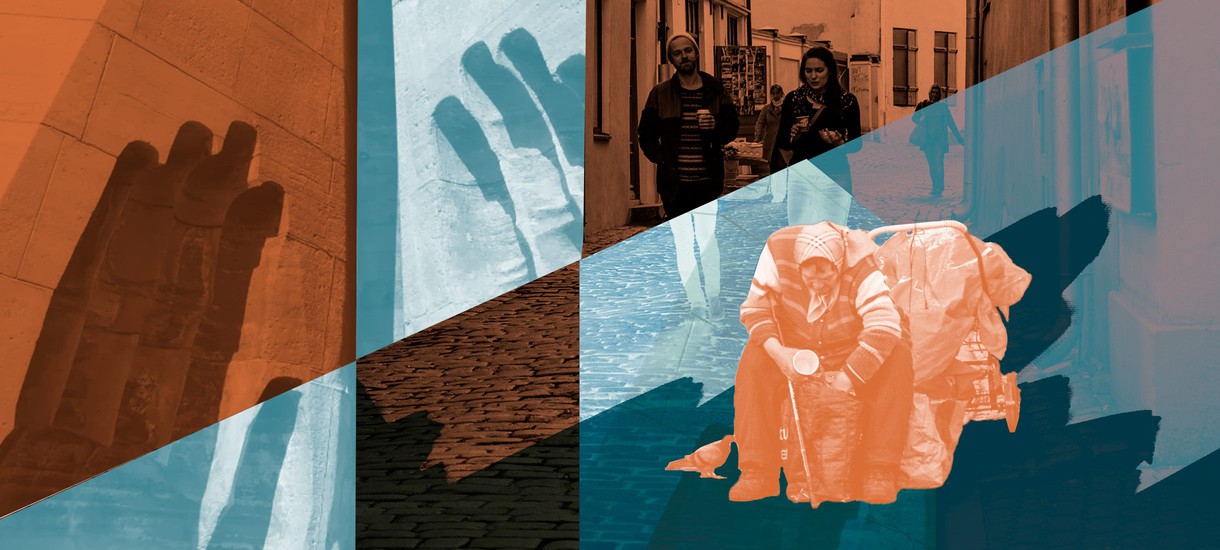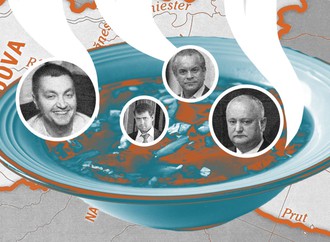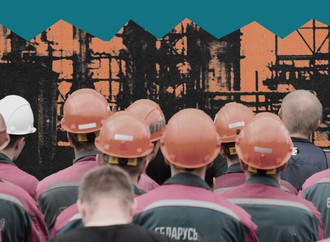A development plan organized around capital can never be just. Similarly, the creation of democratic institutions can only be meaningful if grave inequalities don’t sabotage them. In Estonia, the process of democratization began at the same time as capitalist economic reorganization, a large-scale neoliberal experiment. Exactly this path of economic change poses a danger to the democracy that Estonians achieved independence fighting for.
Estonia is a poster-child of neoliberal development. As other nations that (re)gained independence from the Soviet Union, Estonia introduced such far-reaching neoliberal policies that could even impress old-school capitalist societies such as the UK. Many claim that public austerity, privatization, and the creation of a largely unregulated market has modernized Estonia. After all, nominally, Estonia is the richest post-Soviet state per capita. Estonia is no longer a European periphery, such as Moldova or Bulgaria, but is perceived as fully transformed, and even an equal partner. This is the side of the so-called “Baltic Tiger'' that is most proudly presented. Estonia is seen as a role model for other countries, especially those with a shared Soviet past. There is, however, a dark underside to Estonia’s choices that is rarely brought to light.
The neoliberal path of development has brought new money and new toys to Estonia, but this new wealth is unsurprisingly increasingly concentrated in the hands of few. The truth is that half of Estonian society is being let down and left behind. Inequalities continue to grow, and that threatens the young democracy. Shedding light on the unsavory side of modern Estonian history is important to counteract the overwhelmingly positive description of the country today, often by those refusing to look past the tech scene in Estonia’s modern capital, Tallinn. This article researches the negative consequences that the neoliberal project has already had in Estonia. To be clear, the struggles of Estonians today are not due to some unforeseen side-effects of the neoliberal project, but rather are built into this form of asymmetrical development. This should also go out as a warning to Ukraine, not to repeat Estonian mistakes on its own path of post-war development and political alignment with European institutions.
Estonia’s post-soviet history
For the vast majority of the Estonian population, the end of the imperialist Soviet rule of the country was a moment of pure joy. After decades of occupation, Estonians were finally free again and reinstated independent rule, first declared in 1918. However, the abrupt upheaval of the Soviet system, brought with it major challenges. The economic collapse and harsh neoliberal reforms took a negative toll on the population. High inflation and sharp industrial decline led to spikes in unemployment and pushed people into poverty. The early introduction of a currency board, a radical decision which made Estonia stand out, led to nearly half of Estonian banks collapsing and Scandinavian banks taking over (now Scandinavian banks oversee nearly 85% of all financial assets in Estonia). The introduction of a flat tax while aiming to maintain balanced spending meant the government was bringing little money in and letting even less money out; Estonia had introduced a “painful fiscal policy”.
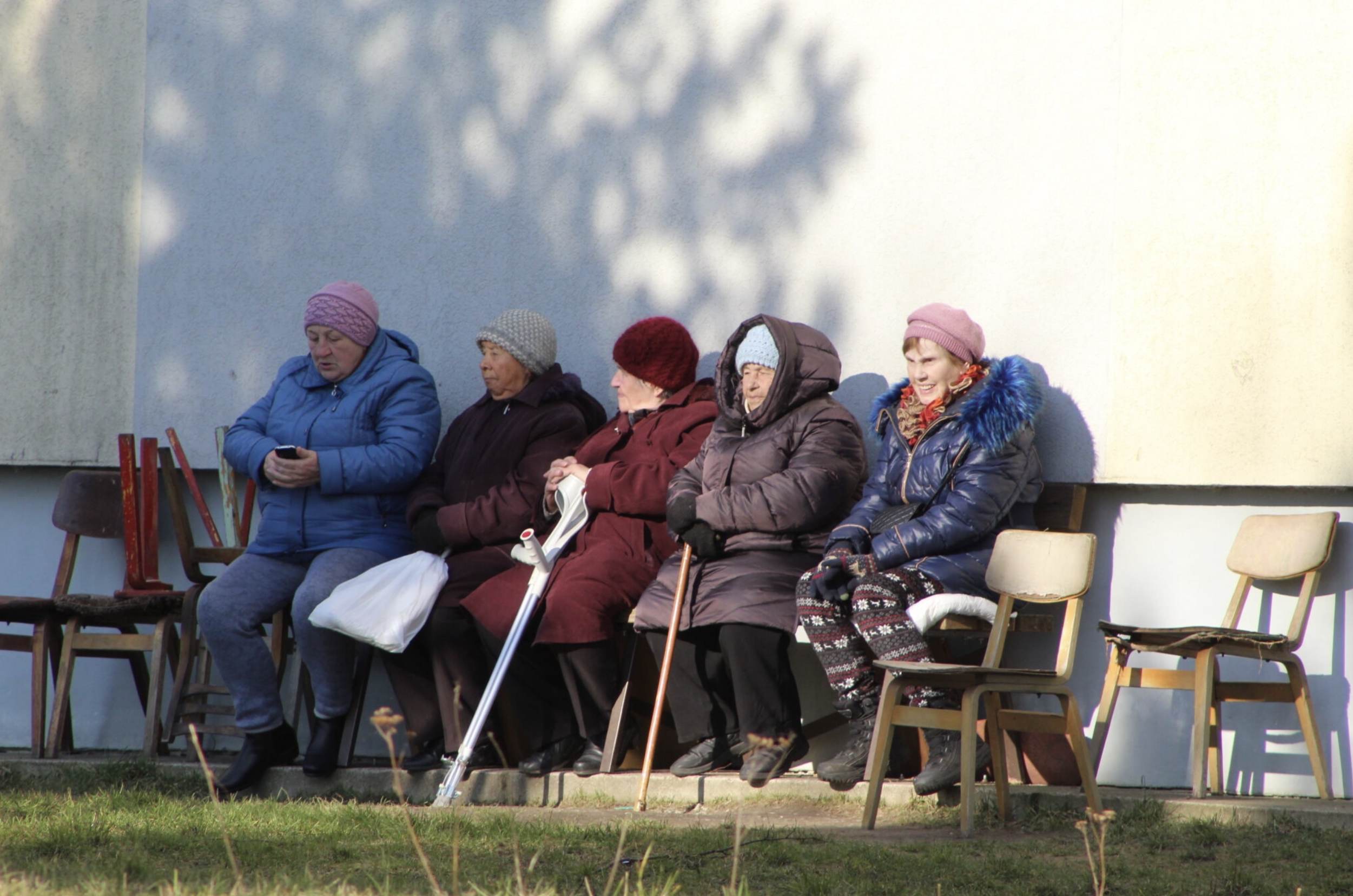
Women basking in the sun in Kopli, Tallinn. Photo: Mirjam Matiisen
The government’s austerity politics following shock-therapy economics allowed the country’s economic situation to improve steadily on paper, but some segments of society suffered significantly. The modesty practiced in the government seems to have spilled over into society, the bulk of Estonians maintained a frugal lifestyle during the first 15 years of independence. At some point this began to change, some order and prosperity began to return to Estonia. Tallinn, once called the “wild East”, known for crime and corruption, would eventually overcome this stereotype. Investors and their money started to pour in, and, by the turn of the century, Estonia was “fully open to economic forces from East and West”.
“Estonians played a role in their own development, but their speedy economic development perhaps has more to do with the massive influx of Finnish aid and investment than the harsh politics of austerity”.
Within the Baltic sea area, the wealthier Nordic countries (Denmark, Sweden, and Finland) chose to “adopt” their Baltic neighbors (Lithuania, Latvia, and Estonia). Finland already had close linguistic and historical ties to Estonia. Especially during the Soviet occupation of Estonia, Finland was, exactly due to the cultural ties, the ideal role model for Estonia: a modern, rich, trendy democracy. The openness of the Estonian economy and sheer population and wealth difference between the two countries meant large investments weren’t too painful for Finland and were extremely beneficial for their trusting southern neighbor. Finland was also rumored to want to curb migration from Estonia into the country, and a stable and wealthy neighbor would mean better opportunity for Finnish exports. Of course, Estonians played a role in their own development, but their speedy economic development perhaps has more to do with the massive influx of Finnish aid and investment than the harsh politics of austerity.
Eurointegratsioon
Estonia’s development continued and sped up on the country’s path toward European integration. Neoliberal reforms, only some of which were required for accession into the EU, guided the first decade of the new century. It was believed that neoliberalism was the medicine that would not only heal Estonia but push it into modernity. Neoliberal political parties spearheaded the campaigns of centralization and digitalization. These allowed the government to save significantly and present a new modern face abroad, but also led to urbanization and a division of Estonian society. The poor population of Estonia – generally from rural communities or areas which lost their soviet industries – became relatively poorer and were simultaneously losing close and convenient access to government services. Wealth became increasingly concentrated and new investments were circulating within a small circle in Tallinn, and it became clear who was and would continue to profit from the politics done in the name of Eurointegratsioon.

Life in Estonia. Photo: Phil Erickson, project “Antipode”
While the government pushed on with neoliberal reforms, Estonia was experiencing a massive outflux of its own workers. Cheap labor migrants were making their way to Finland or the UK in droves and the economic situation was not stable enough for Estonian families to reproduce at a rate to satisfy the needs of the growing economy. Despite carefully following all the rules of neoliberalism and the painful frugality of the Estonian population, the country was not ready for the global economic crisis. The Estonians, with their already tight belts, needed to tighten them even more – in 2009 real wages “only” fell by 5%, but consumption decreased by 21%. This further exacerbated the situation for the rural population and those living in former industrial towns. The northeast region of Estonia, famous for its industrial importance under Soviet occupation, struggled the most during the economic crisis. Estonian and foreign investors alike had little interest in revitalizing the dying and dirty oil shale industry in Ida-Viru nor the hardly profitable textile industry in Narva. At the same time, the Estonian government preferred to ignore the existence and needs of the region due primarily to its large share of Russian-speaking soviet-era migrants that the government would have preferred to get rid of rather than invest in.
“Any leftist organizing or open calls for the newly founded state to intervene, subsidize, and assist could easily be written off as ‘Soviet’, ‘Socialist’ or ‘Communist’ propaganda that a majority had understandably become disillusioned with”.
Despite it becoming clearer who the winners and losers of neoliberalism will be in Estonia, this was not picked up on politically. Since Estonia reinstated its independence, social conservatism, nationalism, and economic liberalism have had the most power and influence, with no serious leftist or progressive parties at play. Of course, conservatives and capitalists were more interested in the big picture: national development, increasing GDP, EU and NATO integration, etc. Thinking big helped paint a positive picture of Estonian independence – the economy was growing, the country was becoming increasingly digitized and ‘modern’, corruption was disappearing, and the politics of austerity gave the impression of stability to investors and European institutions. Many of these changes meant tangible improvements that were felt by some portions of Estonian society, so why should the government pay attention to the losers of the transition? Capitalist thought and the individualism of it reigned supreme; any one not smart enough to play the game was responsible for their own demise. This attitude was exacerbated by the fact that Estonia was not only objectively successful, but also relatively speaking extremely successful compared to other former-soviet republics. Furthermore, any leftist organizing or open calls for the newly founded state to intervene, subsidize, and assist could easily be written off as ‘Soviet’, ‘Socialist’ or ‘Communist’ propaganda that a majority had understandably become disillusioned with.
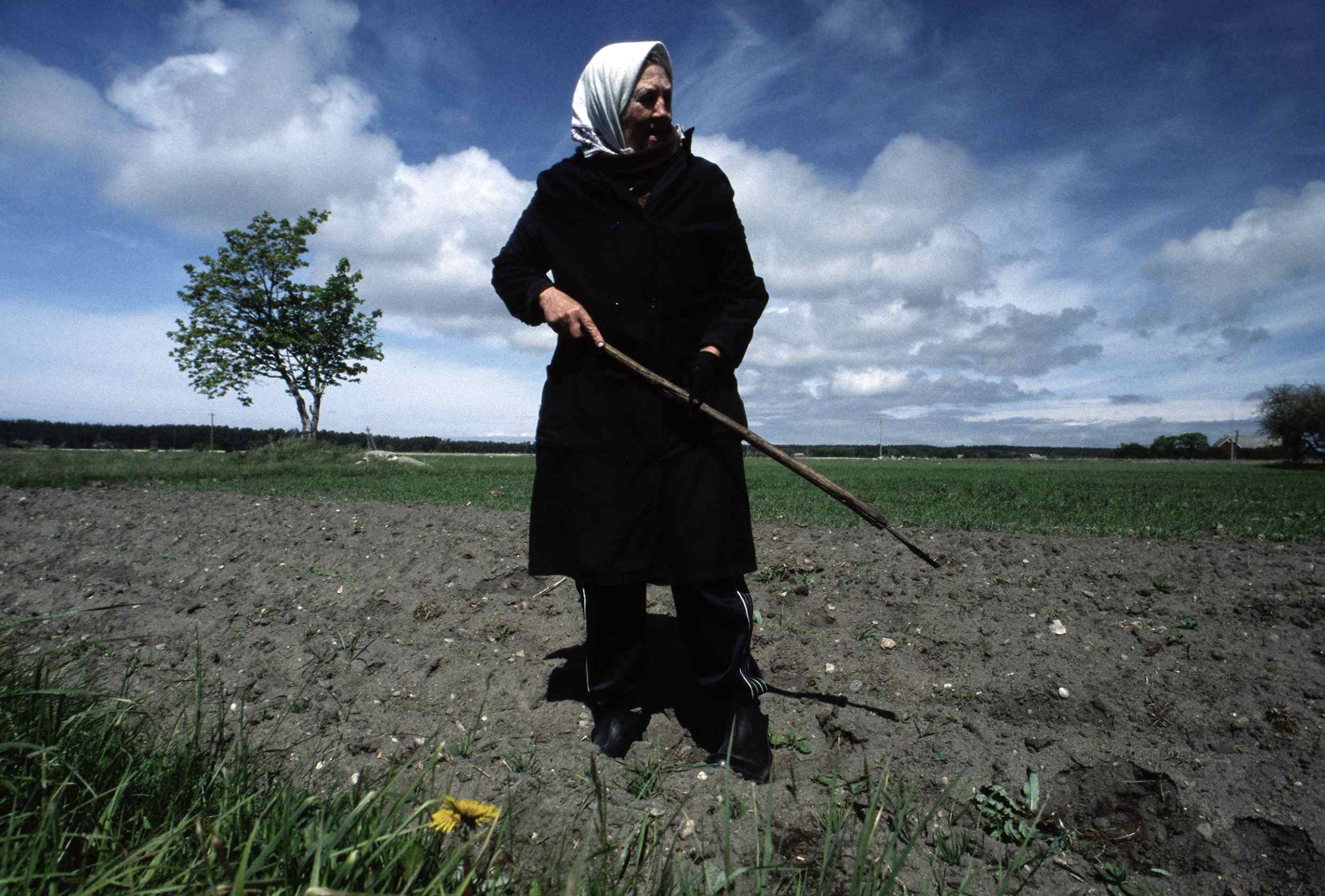
Life in Estonia. Photo: Phil Erickson, project “Antipode”
The wide-spread motivation to achieve Eurointegratsioon was used by the Estonian government to push reforms and allow for the ‘free market’ to run wild so long as the economic trajectory and bookkeeping remained positive. As in the 1990’s, Finland continued to contribute significantly to Estonia’s swift neoliberal make-over. However, in retrospect Estonia’s favorite neighbor and role model was only important economically. Politically, progressive politics in Finland seemed to have had no influence on Estonian politics. Even the Social Democrats in Estonia, which been a political contender in one form or another since Estonia’s first democratic elections, is generally much more conservative and market friendly than their counterparts in the “Party of European Socialists” and is particularly divergent from Scandinavian social democratic parties.
Estonia’s tough path out of the periphery
After Estonia’s admission into the EU, emigration to Western Europe intensified. Despite significant domestic economic growth, tens of thousands of Estonians were attracted by higher wages, better working conditions and quality of life – Finland and Great Britain continuing to be the most popular EU destinations. Without a doubt, Western Europe has profited from the cheap labor from all of the Baltic states, and Estonians proved to be particularly “mobile”. 10% of the population worked abroad on at least one occasion in the last decade. Western Europeans with only a vague understanding of Estonia – if any understanding at all – were finally getting to know the Estonians, their new European allies.
Finns already thought they understood Estonia, and Finnish media mocked Estonia and substantiated their peripheral position in Europe. They focused on crime and alcoholism in Estonia and reported how low wages in Estonia led to disadvantages on the Finnish labor market. Prostitution, car-theft, gangs, and pollution were common topics, and even the beneficial introduction of free public transport for Tallinn residents was spun and criticized for being “anti-tourist”. While the small Estonian population in London could never have grabbed as much negative attention as the much larger groups of other peripheral Europeans like Romanians and Poles, Brits had their own way of peripheralizing Estonia. Open borders in the EU also allows for easier travel, and Tallinn, just as Prague, became a notorious destination for cheap booze and parties. Tourists weren’t just coming to Europe’s edge for a drink - sex tourism became another issue of concern in Estonia. The government waited very long to pass anti-trafficking laws, and as a local interviewee put it so nicely, it’s because “it’s better to think about good things [than] about bad things”.

Life in Estonia. Photo: Phil Erickson, project “Antipode”
The peripheralization of Estonia, or rather the maintaining of Estonia as a periphery, did not only exist as stereotypes in the minds of Western Europeans. Entering the European Union also resulted in a “primitivization” of the economies of all Baltic states; industrial sectors shrunk and disappeared during the capitalist transition forcing portions of the industrial proletariat back into agricultural labor. This again points to the winners of the transition: property owners, capitalist bankers, or laborers in the digital economy; and the losers of the transition: deskilled workers providing food and wood to Western Europe where agriculture and forestry are “too expensive” due to higher labor costs. While the Estonian population observed its winners and may have felt proud of the relative success of the Estonian economy since European integration, the country remained a European periphery providing cheap labor, cheap products, and lucrative business deals to the Western European center.
The image of Estonia as a periphery began to slowly change in the last decade. By 2015 Estonia had achieved positive net migration due to increased migration from other EU countries and a high number of Estonian returnees. The tech industry has taken over Tallinn, the city hosted the 2017 EU digital summit and has become a hub for so-called “digital nomads”. The government is now well-known for its digitized, effective, and secure bureaucracy, and Estonia is a leader in cybersecurity for the entire EU. The number of international students at Estonian universities has increased steadily and over a third of academic research positions are held by non-Estonians, numbers comparable to Western European countries. Increasing prices mean Estonia can no longer be considered a place for “cheap” tourism. After three decades of development and successful diplomacy, Estonia is now known for its tech scene, e-Governance, and charming cities. Without noticing, Estonia has climbed out of the periphery and is no longer a place of poverty, alcoholism, backwardness or a market for cheap labor but has much more positive connotations throughout Europe and the world.
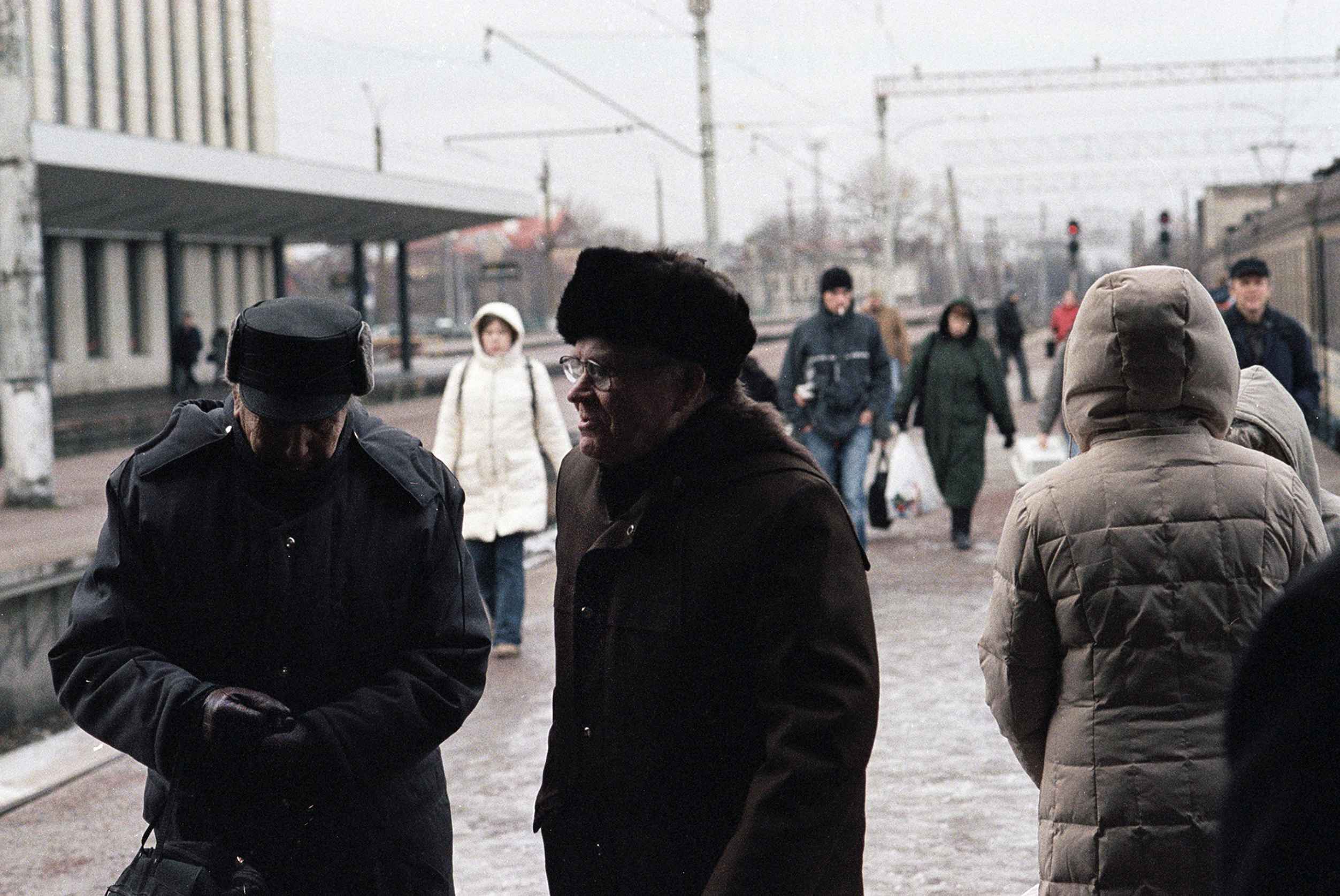
Life in Estonia. Photo: Phil Erickson, project “Antipode”
The final push out of the periphery came after February 2022. As Russian troops encroached deeper into Ukraine than ever before and air raid alarms went off all over the country, Estonia took on a new role in the European Union. A country that had only recently become a consultant for digital questions was jolted to the forefront of the European response to Russian aggression. The strong solidarity for Ukraine and Ukrainians going through what Estonians felt was a reminder of their own history and fears gave new weight to what Estonians said on the world stage. Estonian diplomats and representatives of Estonian foreign policy and defense institutions appear in conversations and interviews on a range of topics and Estonia’s prime minister Kaja Kallas has become one of the most well-known and respected political leaders in Europe.
Although Estonia’s response to the Russian invasion acted as a catalyst for Estonia’s final push out of the periphery, this topic will not be a one-and-done story for the country. Defense policy and NATO questions, European law and unity, digitalization, demography, sustainable investments, migration, etc. are all areas where Estonia’s expertise, perspective, opinion are sought after. Estonia has managed to replace its image, reputation, political and economic provision with a new image, positive reputation, and long-term political and economic goods that are wanted and needed in the broader ‘western world’.
Estonia in the center, but at what cost?
Three decades of independence have not only brought democratization and economic growth. The largely unregulated capitalist system in Estonia has left many people behind and created new challenges for Estonia that need dire attention. After an arduous path out of the European periphery – where does Estonia stand today?
“Estonia has one of the lowest minimum wages in the Eurozone yet has the highest cost of living of any former Warsaw-Pact nation”.
Economically, using classical economic metrics, Estonia has had sporadic GDP growth rates since the economic crisis in 2008/09. This is partially due to the dependence on fluctuating market prices for important Estonian exports, such as wood and petroleum gas, as well as the successes of various tech companies and investments. Inflation in Estonia has almost always been higher than the EU average, even after the economy had stabilized in the late 1990’s. Wages in Estonia are unfairly distributed, even more so than in comparably successful transition-economies like Poland, Czechia, and Slovakia. This unfair distribution is especially noticeable between regions (wages in wealthy Tallinn suburbs are twice as high as in some eastern and southern Estonian counties), and in the gender gap (Estonia has the second largest gender gap in the EU). Real wage growth in Estonia didn’t even reach 1.5% between 2007 and 2017, the war-induced record inflation resulted in a gash in real wages in 2022. At the same time, Estonia has one of the lowest minimum wages in the Eurozone yet has the highest cost of living of any former Warsaw-Pact nation.
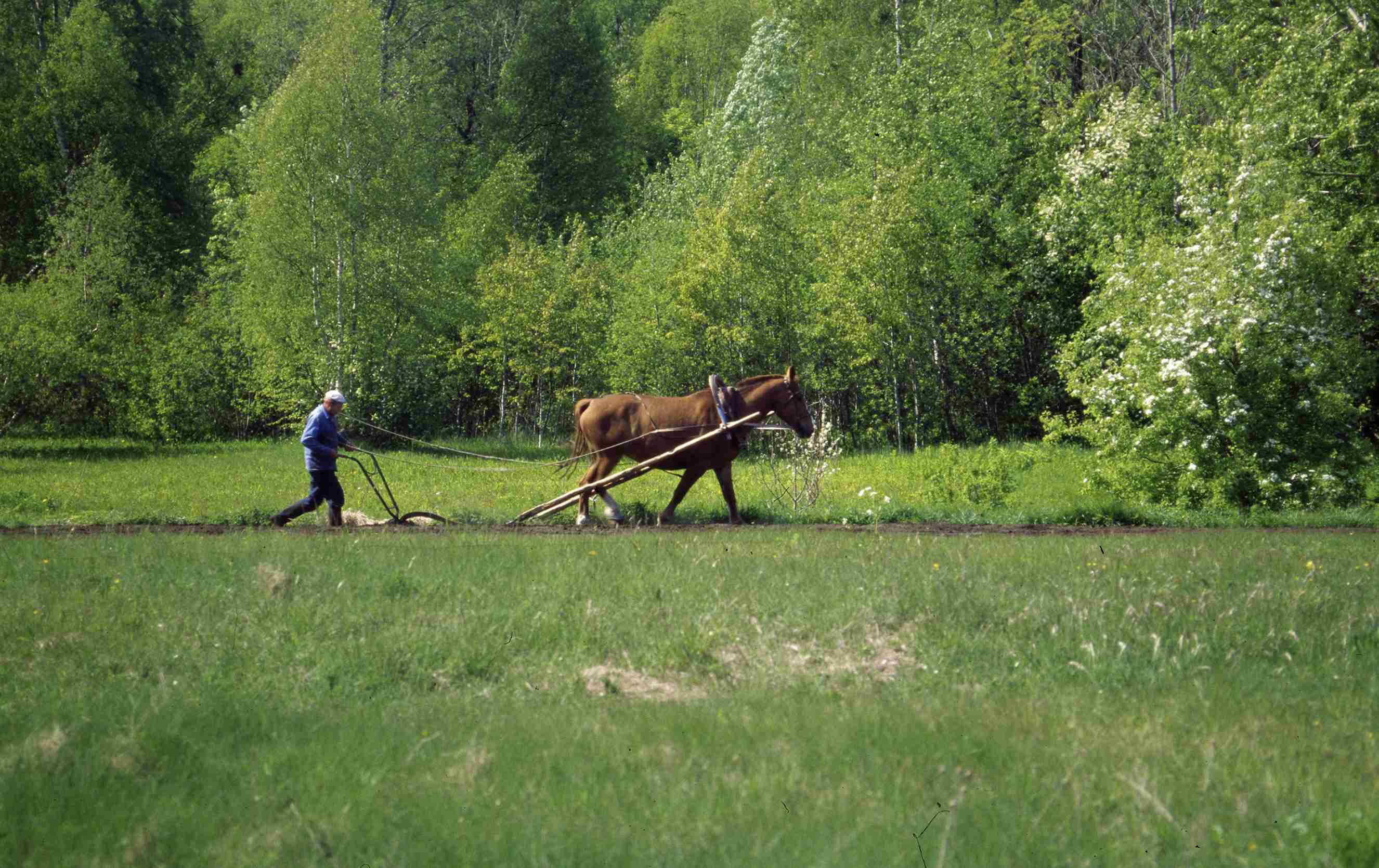
Life in Estonia. Photo: Phil Erickson, project “Antipode”
A more detailed look at the statistics shows that not all Estonians are profiting from the relative success. Nearly 23% of Estonians are at risk of poverty (this increased in 2021 in almost all regions of the country), and pensioners in Estonia are the most at risk of falling into poverty in the entire EU. Despite the small size and well-connected transportation infrastructure, half of Estonians live in regions classified as “shrinking regions with socioeconomic problems” and “areas of significant structural disadvantage”. These regions were never removed from the periphery within Estonia and the centralization of the economy, administration and education have exacerbated the differences to those regions. Social mobility has been impeded due to the increasing difference in quality of life between the Tallinn metropolitan area, the educational capital of Tartu and the rest of the country.
“The financial struggles of ordinary Estonians cannot be eradicated by shiny buildings, fast internet, or newly paved roads”.
In the last decade, the cost of buying or renting a flat on Estonia’s uncontrolled housing market have both increased more than in any other EU-member country. Moving to Tartu for access to better education or to Tallinn for a better paying job is now much less feasible for families and individuals. Students at the University of Tartu recently organized protests to demand more government support. The vice president of the student’s union, Hanna Britt Soots, told me that government stipends haven’t been raised in nearly 10 years and students are now fighting for access to study grants or loans and recalculated funds for low-income students that are designed to make studying possible for all. Due to increased economic opportunity, Estonian out-migration has slowed, but the cost of living has increased faster than local employers have adjusted their wages. This means that Finland remains an attractive place to work. Nowadays it’s not only stereotypical blue-collar labor migrants from Estonia, but also swaths of well-educated Estonians commute to Helsinki or live in Finland.
Improvements in all types of infrastructure in Estonia give the country an impressive image, but the financial struggles of ordinary Estonians cannot be eradicated by shiny buildings, fast internet, or newly paved roads. The strive for modernity and economic growth have had effects on quality of life in other ways too. Tallinn’s government has prioritized infrastructure for car traffic, making the city loud and dusty just to allow those who can afford it to drive around, because, as Tallinn’s mayor believes that “a car is a status symbol and driving should not be restricted”. Estonians, famously atheist, often claim that they have a spiritual relationship to the forests, but logging companies have been shamelessly allowed to clear-cut forest throughout the small country in record numbers in the last two decades.

Life in Estonia. Photo: Phil Erickson, project “Antipode”
The individual economic struggles have led to a delay in social change as well. While wealthier Estonians in multi-cultural sectors of Tallinn’s tech economy may be open to progressive change, the majority of the country has only made insignificant changes in their attitudes towards social policy. It’s perplexing how Estonia’s long-time role model Finland hasn’t been able to rub off on Estonia and share some of its respect for workers’ rights, progressive values, and the welfare state. When asked about this, young Estonian historian Jan Lucas Videvik simply told me that Estonians aren’t (yet) rich enough to be progressive. Although economic prosperity and progressive values are not inherently tied to one another, they’re understood as interdependent in the Estonian mindset. Therefore, for the time being, the continued economic struggles mean that “progressive” social topics such as closing the gender pay gap, critically discussing racism and discrimination, slowing deforestation, equality for LGBT+ residents, or real wealth distribution remain on the back burner. This is unfortunate for ethnic and sexual minorities living in Estonia who face discrimination. Whilst Ukrainian refugees are mostly being warmly welcomed in large numbers, the situation looked much different in 2015 when refugees from outside of Europe were seeking safety. Of course, tolerance and a truly humane social policy won’t suddenly appear on the agenda if a desired GDP per capita is achieved in Estonia, it needs to come from an active society and be enshrined into law by political representatives.
Politically, Estonia, again, has made significant improvements in the last 30 years, but it doesn’t take long to find some less optimistic developments. Estonia’s relative success as the “Baltic tiger” has allowed austerity and neoliberal policies to become the most prevalent political ideology across party lines. The latest parliamentary election in Estonia in 2023, although it brought some new parties to the forefront, is really just a continuation of decades of social conservatism and unchecked capitalism. Kaja Kallas’ Reform party (Reformierakond), a center-right party whose main focus is to maintain and expand the capitalist Estonian economy, won in a landslide victory. Her party coalesced with the social democrats (Sotsiaaldemokraadid), a center-left party without much ambition, and the Estonia 200 (Eesti 200) party. Eesti 200 is the only political party, beyond the tiny Estonian greens (Rohelisted) that received less than 1,000 votes, which openly advocate for progressive social politics. Although this is promising, the party’s economic policies don’t differ from the neoliberal status quo in Estonia. There remains no reason to believe that, despite the multiple crises, Estonia’s new coalition will rethink its tax system, introduce restrictions on the housing market, or even question the status of social services.

Prime Minister of Estonia Kaia Kallas. Photo: Liis Treimann
In total, positive development and bold leadership have pushed Estonia out of the European periphery and into the European center – a modern nation. Estonians are proud of their objective relative success and the more subjective feeling of modernity – new cars, new buildings, new investments, new money, new reputation. This pride is synonymous with struggle, because Estonian success has been linked to neoliberal policies, and neoliberalism only rewards those who work hard enough, or so the myth goes. Therefore, Estonians continue to struggle, accepting wages that are too low, paying too much for rent, allowing their forests to disappear, forcing workers to leave the country, and letting wealthy businesses to do as they please. Some populist parties may like to blame the Russian minority or middle eastern refugees, other mainstream parties blame laziness and promise that hard work will pay off. If one were to search for critical voices wanting to correct the neoliberal mistakes in Estonia’s modern political history, one would do so in vain.
“Whether or not Estonians relate this disparity to political decisions can be answered with a resounding ‘no’”.
A closer look at Estonia’s path out of the periphery reveals that Estonia is not only a country of e-Governance, self-driving taxis, and the ‘entrepreneurial spirit’, but also a country of growing economic and political division, increasing private debt, and wide-spread frugality to cope with the consequences of the cherished free market. Whether or not Estonians relate this disparity to political decisions can be answered with a resounding “no”. Continuing with the neoliberal logic, the government will also expectedly maintain their focus on the profitable regions and continue to ignore systematic issues. The social despair and questions of identity and security in Estonia’s border region don’t have to be so complicated. Narva’s mayor said the gap in society is obvious, and the way to move on is by communicating with locals in disenfranchised areas and move forward together. The path forward has to include rethinking economics in Estonia. Many beat around the bush, but the way to encourage more unity and shared prosperity has been made very clear: “It’s the economy, stupid”.
Estonian lessons for Ukraine
Ever since the Maidan revolution, it has been clear that a majority of the Ukrainian population and their political representatives aim for further European integration. The prospects of Ukraine’s integration into the EU are taken much more seriously now since February 24th. Although there is plenty to criticize about the European Union, Ukrainians clearly see their future as a member, and this has become a real possibility. A path of alignment with the EU does not mean that Ukraine must blindly implement all neoliberal recommendations as if the only other option is no European integration. Thinking outside of the box can allow Ukraine to develop in their own way, implementing democratic and progressive political reform without selling out its natural resources and labor.
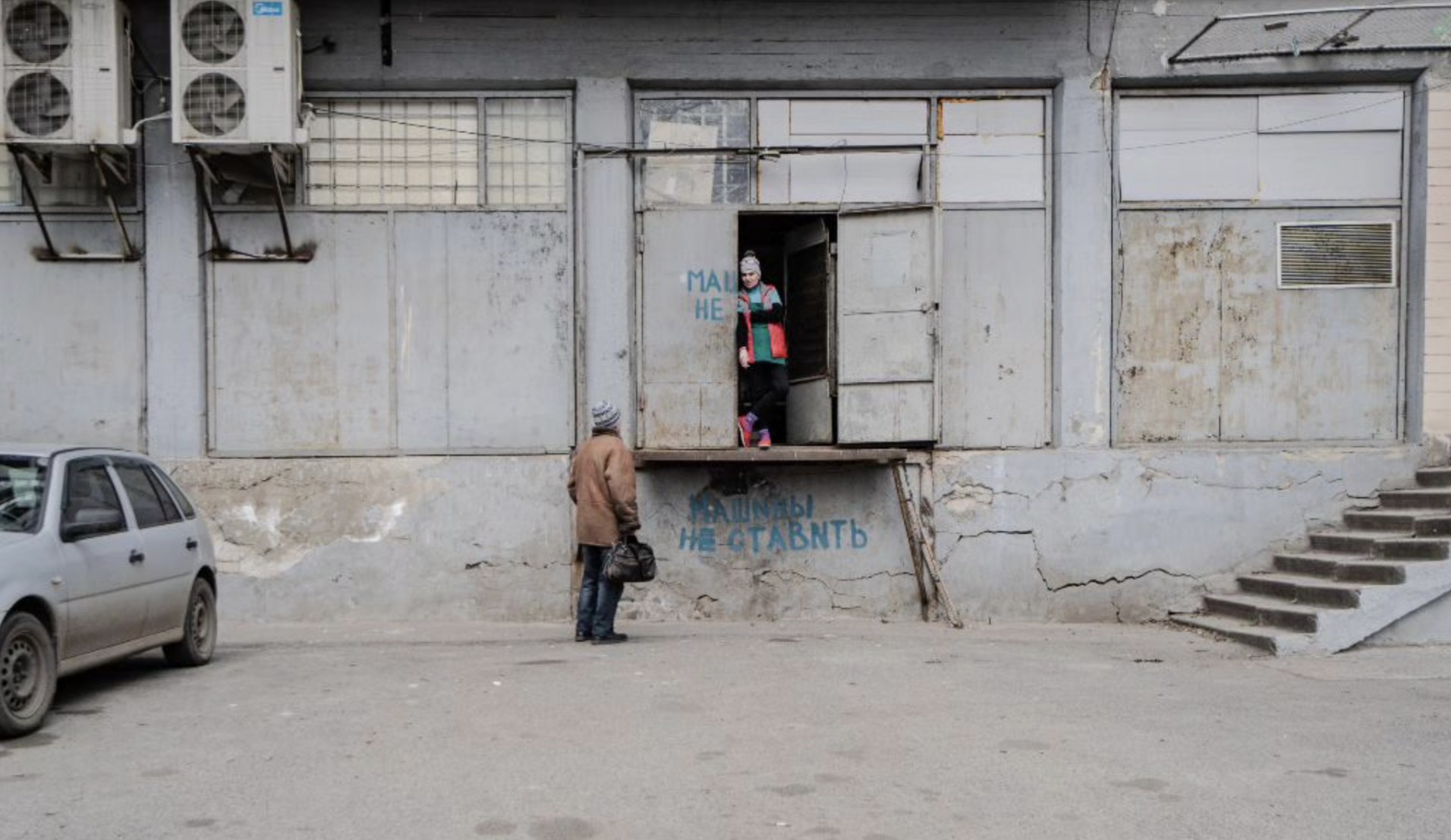
Life in Kharkiv, Ukraine, April 2023. Photo: Ivan Samoilov
Ukraine has long been in the European periphery – nominally a poor country, seen as a backward place from Europe’s center, and a market misused for cheap imports and labor migrants. Of course, Ukraine’s geographical, political, and economic make-up differs significantly from Estonia’s, but there are similarities. Most Ukrainians are motivated to become a part of the European Union and leave their peripheral position in the past. The Ukrainian government has pushed controversial policy decisions to realize these goals (i.e. land reform). Zelenskyy has already been criticized for making too many deep-cutting compromises to please Western donors, and the current plan of the post-war reconstruction looks highly problematic. If Ukraine is to integrate into the EU and exit the periphery, it should do so on its own terms. There are lessons to learn from Estonian mistakes.
“Blindly following a neoliberal ideology in the hopes of achieving superficial economic benchmarks while leaving most Ukrainians behind would be a grave mistake”.
Ukraine shares much of its modern history with Estonia, and throughout the war, Estonia has become a close ally of Ukraine and the countries’ populations have grown closer too. Due to these close ties and tantalizing stories told of Estonian success, it may be tempting to look to Estonia as a role model of European integration and de-peripheralization. Especially the shared discreditation of the Soviet legacy in both countries, which can hinder the engenderment of a strong leftist movement in the political mainstream, easily gives way to fighting for the myths of neoliberal state and market reform. There are surely points regarding Estonia’s digitalization, rule of law, government transparency, and media freedom that can be useful for Ukraine, but blindly following a neoliberal ideology in the hopes of achieving superficial economic benchmarks while leaving most Ukrainians behind would be a grave mistake, just as it was in Estonia.
Estonia’s story as it is usually portrayed abroad is one of success thanks to neoliberal reform, but a closer look reveals major gaps in this story. Ukraine can learn from Estonia’s history that austerity and suffering aren’t necessary components of holistic development, there are other paths. Ukraine can care for progressive social policy before their “as rich as the Nordics”, because feminism, LGBT+ rights, a progressive tax system, and climate justice are beneficial for all and absolutely do not need to wait for some economic benchmarks to be fulfilled. In actuality, Martin Hayford, an applied researcher at the University of Tartu, suggests based on his research on transitioning economies that the introduction of progressive economic and social policy are stronger indicators of de-peripheralization than the economic benchmarks Estonia has achieved. No matter how impressive they may seem from the outside.
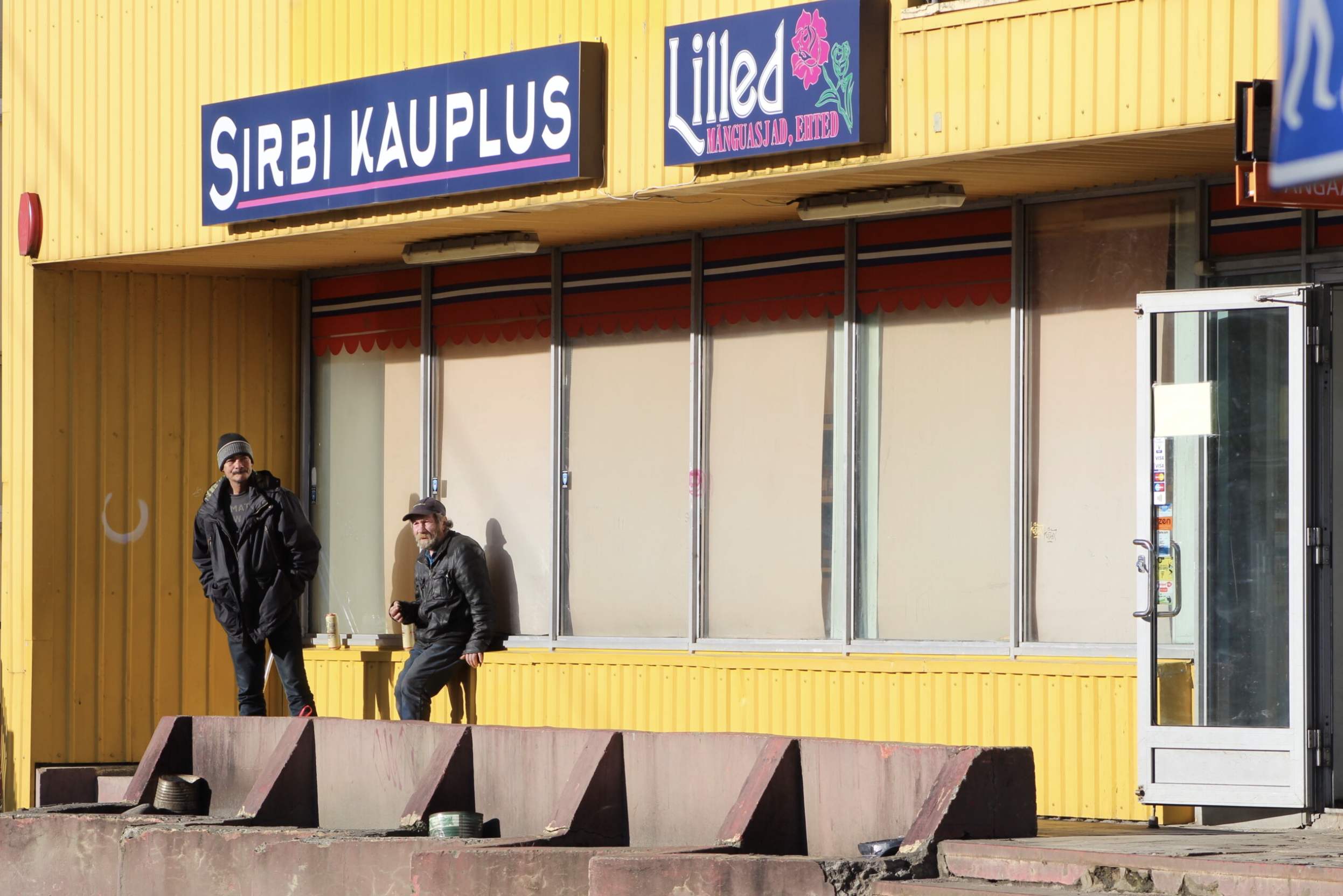
Shop in Kopli, Tallinn. Photo: Mirjam Matiisen
Ukraine can also learn from Estonia that neoliberalism should not become a state-ideology and is not the middle finger to the Soviet past that some politicians will lead them to believe. Neoliberalism has brought new toys to Estonia – BMWs, skyscrapers, fancy co-working spaces for tech “expats”. But neoliberalism has also resulted in half of Estonians being left behind and infected the political mainstream so much that the resulting social challenges and problematic regions are not likely to receive any meaningful political attention in the foreseeable future. Slower but widespread progress is better than creating new and larger economic and social divides on the path towards European integration. The division will deepen social inequalities, and undoing those mistakes decades later is expensive, if not impossible.
In Ukraine’s current state, there are factors that can aid in achieving holistic and just development, and many that will stand in the way. The Soviet collapse marked the first period of painful capitalist reforms in Ukraine. The reforms in the last decade in-line with recommendations from the EU, IMF, and World Bank highlight the neoliberal path Ukraine is on. Paving a new path, largely against the will of the tiny Ukrainian upper class, and large donor countries and organizations, is not an easy task. Unlike in the Estonian case, neoliberal austerity politics in Ukraine don’t stand alone, but have had negative effects in combination with several years of war. Particularly the full-scale invasion has peripheralized Ukraine even further. The unequal trade balance in Ukraine, importance of the agrarian sector of the economy, and huge outmigration exacerbated by the invasion are all factors that have to be considered when imagining post-war development. On the bright side, there are factors that can make just development in Ukraine achievable. Ukraine has an amplified voice in global politics like never before, and this can be used to deny reforms that aren’t beneficial to Ukrainian people. This is something most peripheral countries almost never have, and Estonia is only gaining as it has exited the periphery in the eyes of Western partners. Of course, whether this voice will highlight the cause of just post-war reconstruction is a matter of political struggle inside Ukraine.
